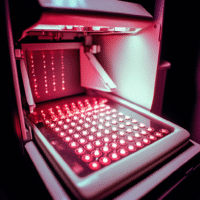Understanding the Study Results
This study looked at whether low blood pressure during surgery (intraoperative hypotension) affects the chances of feeling sick after surgery (postoperative nausea and vomiting or PONV) in patients having laparoscopic gastrointestinal surgery.
What Worked?
- The study found that low blood pressure during surgery did not lead to a higher risk of nausea and vomiting after surgery in the patients studied.
- This means that for patients who are already at high risk of PONV, having low blood pressure during surgery is not a significant concern in terms of increasing their chances of feeling sick afterward.
What Didn’t Work?
- There was no link found between low blood pressure during surgery and higher rates of nausea and vomiting after surgery.
- Different levels of low blood pressure (measured in various ways) showed no significant impact on the outcome.
How Does This Help Patients or Clinics?
- Patients can feel reassured that their low blood pressure during surgery is not likely to cause more nausea or vomiting afterward.
- Clinics can focus on other risk factors for PONV rather than worrying about blood pressure during surgery.
Real-World Opportunities
- Hospitals can use these findings to optimize their monitoring and management of patients during surgery, focusing on more impactful factors for PONV.
- Doctors can educate patients about what to expect regarding nausea and vomiting post-surgery, based on their individual risk factors.
Measurable Outcomes
- Clinics should track the rates of PONV in patients after surgery to see if there are other factors influencing it.
- Monitoring patient feedback on their experience with nausea and vomiting can help improve future care.
AI Tools to Consider
- AI-based predictive analytics can help identify patients at risk for PONV based on their medical history.
- AI tools can assist in monitoring vital signs during surgery to ensure better patient safety.
Step-by-Step Plan for Clinics
- Start Small: Begin by reviewing current practices for managing PONV and integrate findings from this study.
- Educate Staff: Train staff on the importance of focusing on other risk factors for PONV.
- Monitor Outcomes: Establish a system to track PONV rates and patient experiences in relation to surgery.
- Evaluate and Adjust: Regularly review the collected data to refine practices and improve patient care.
For more detailed information, you can read the research article here.






























